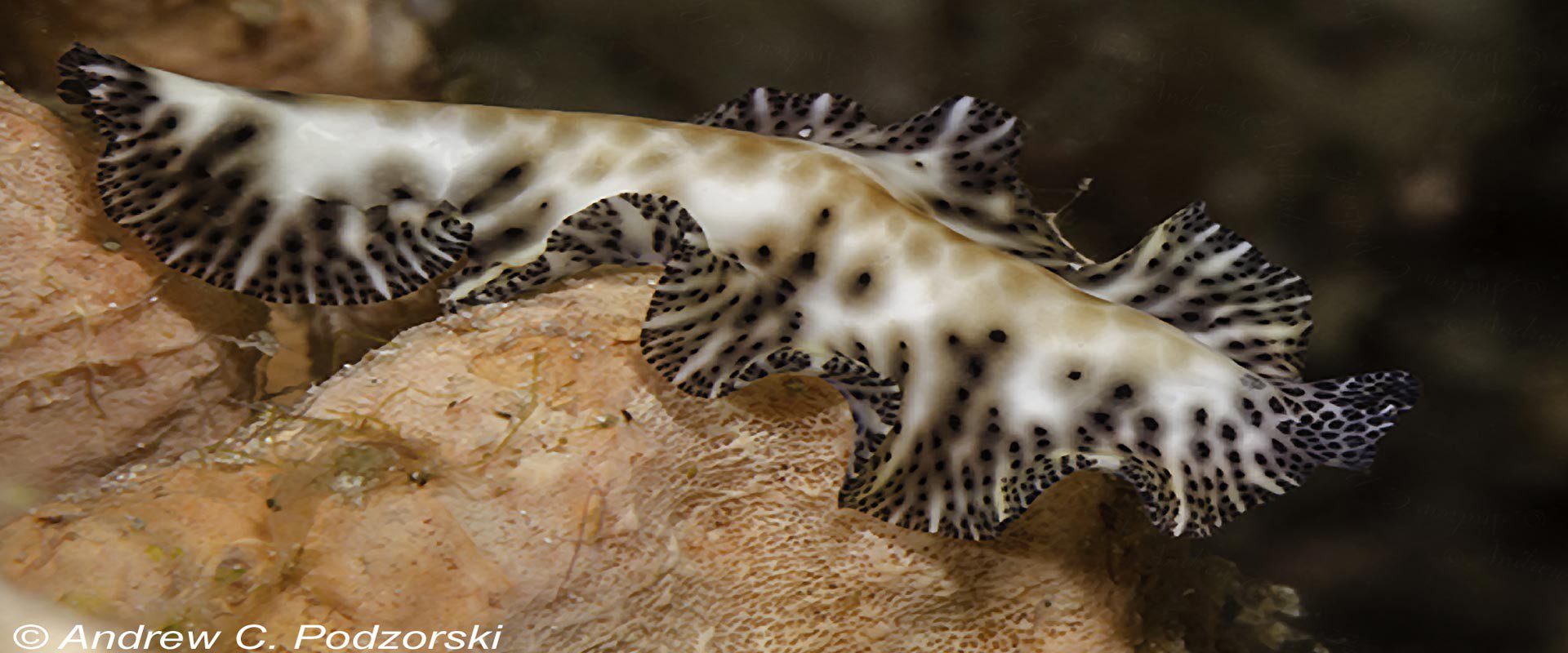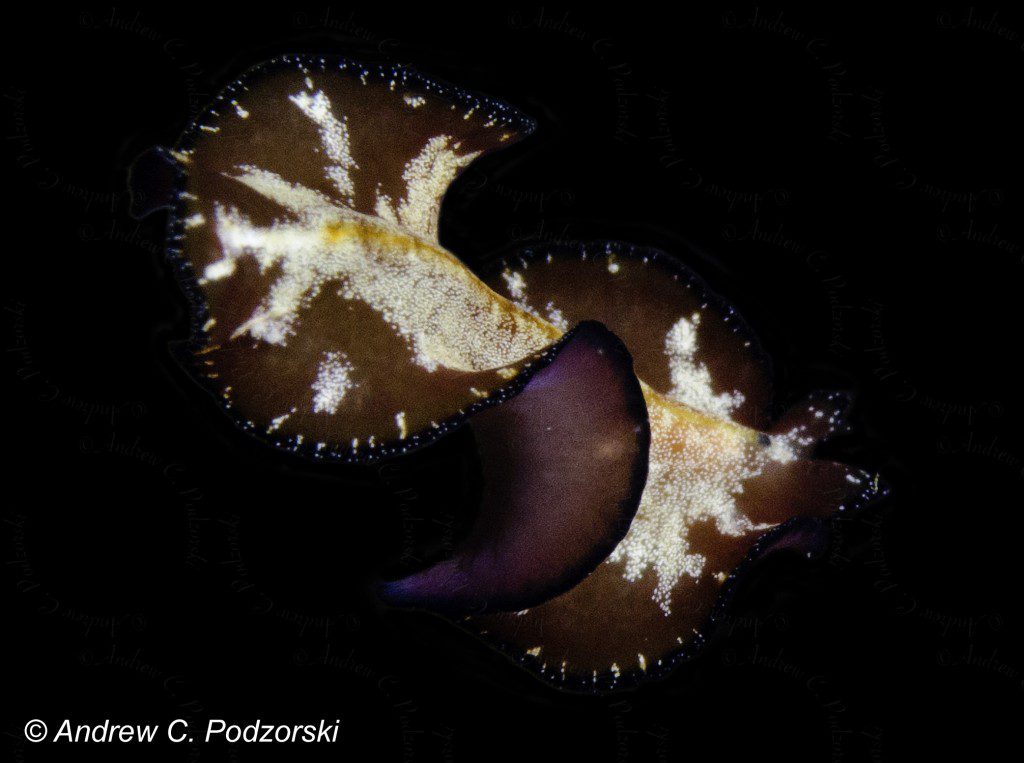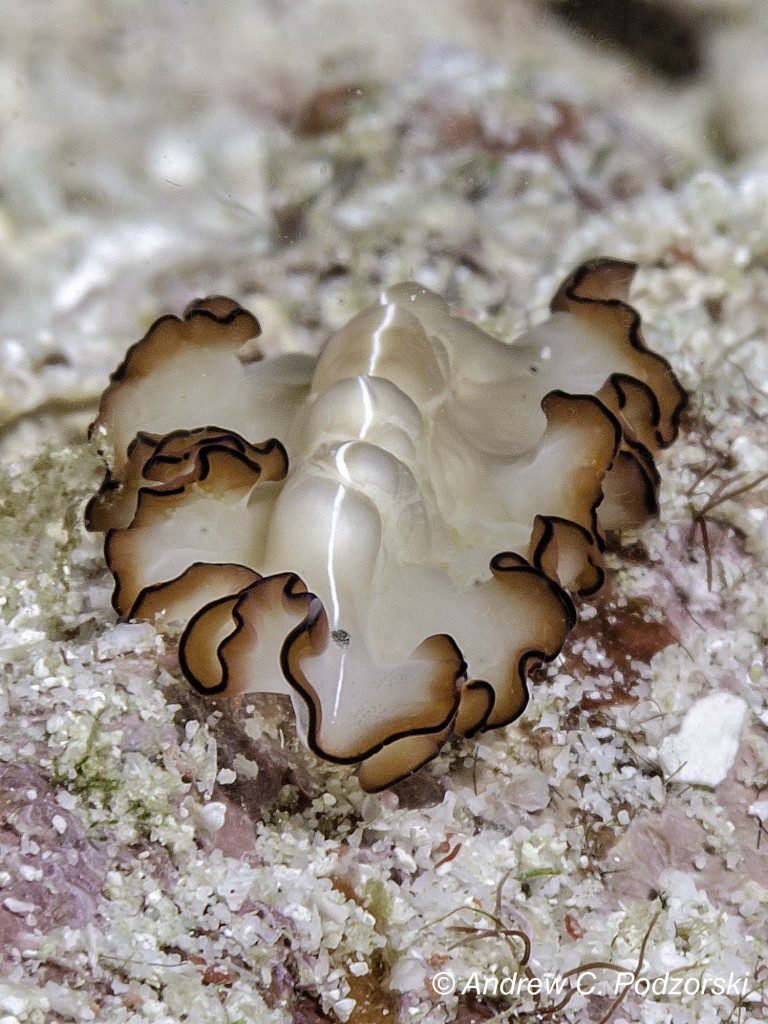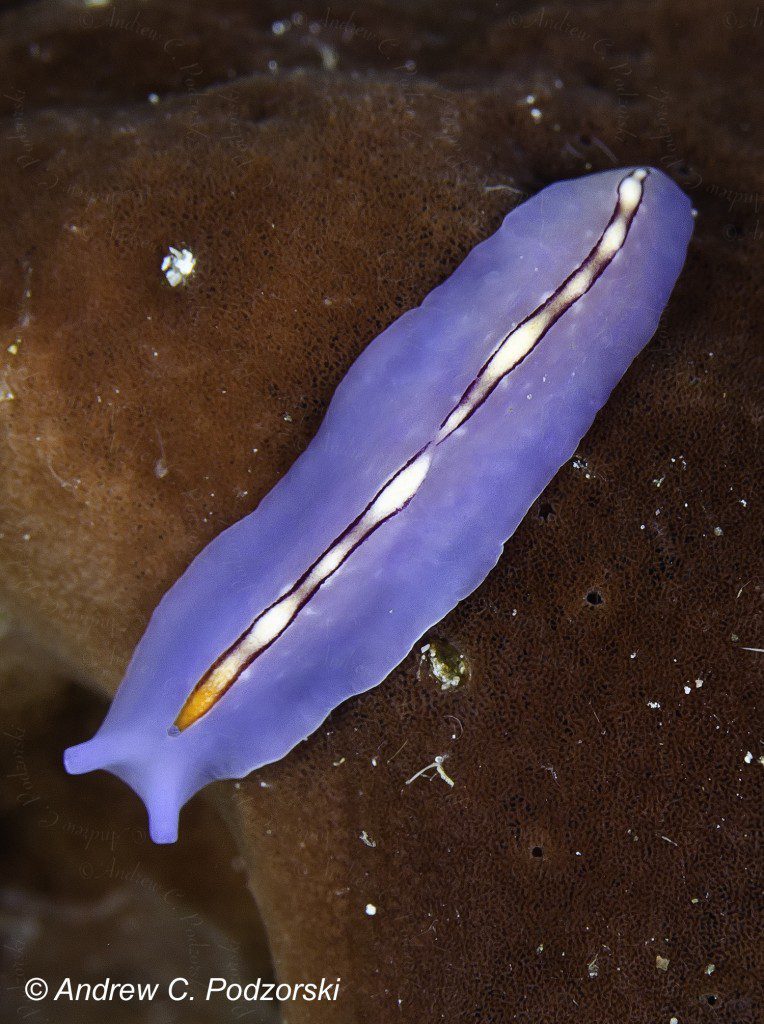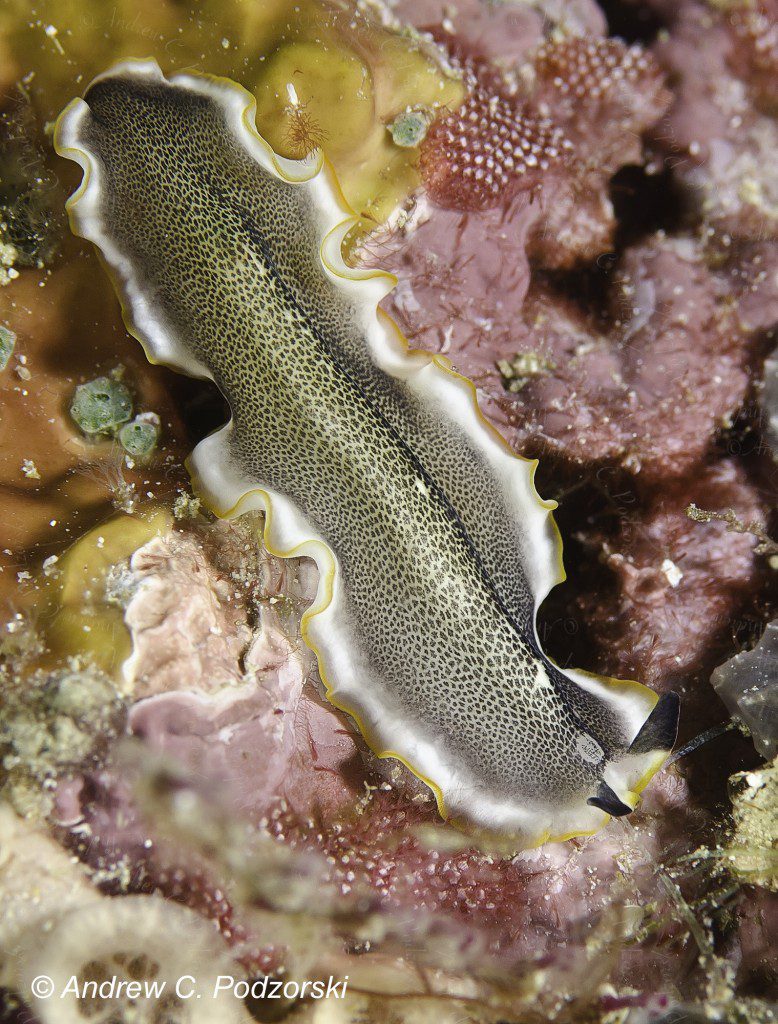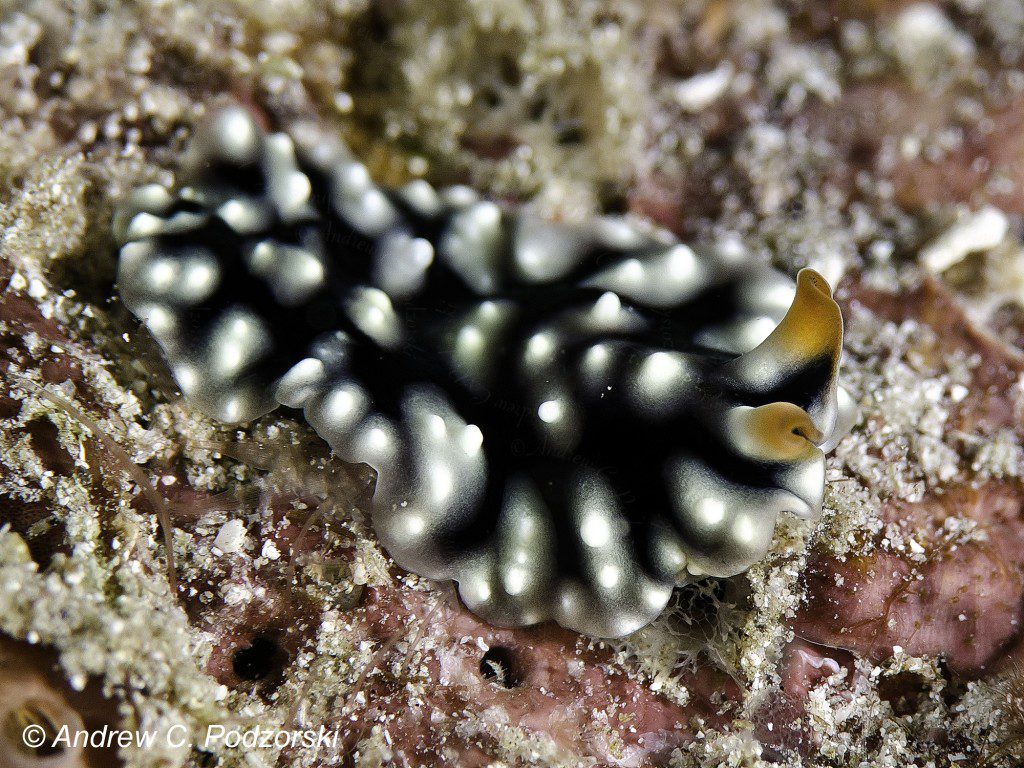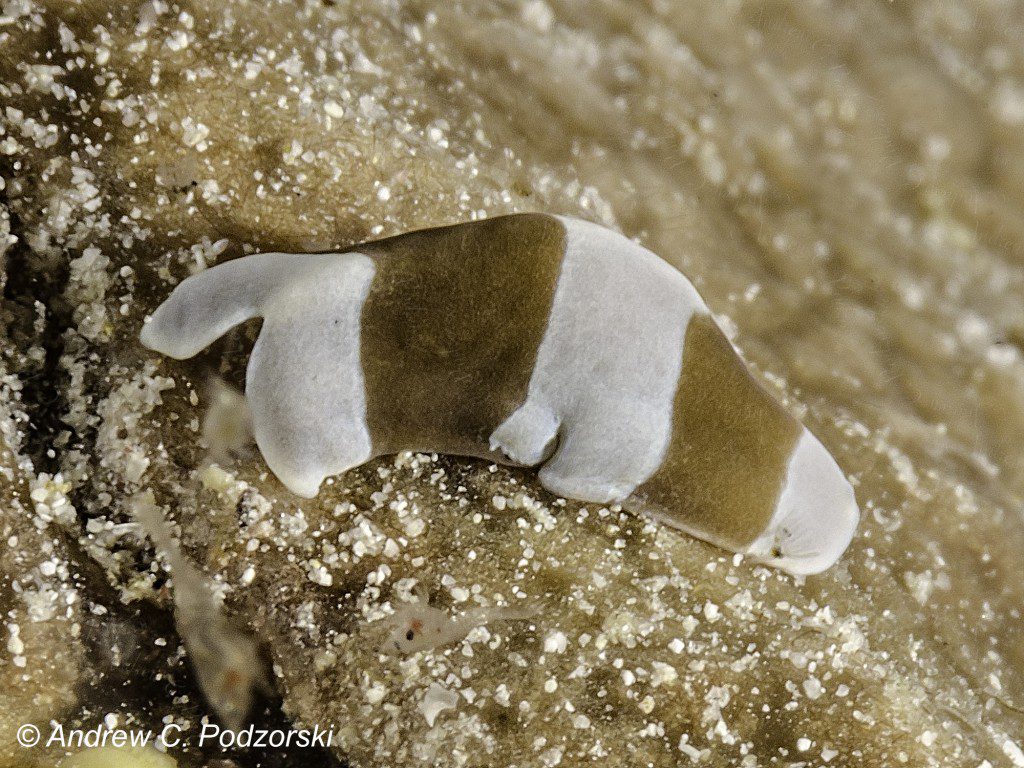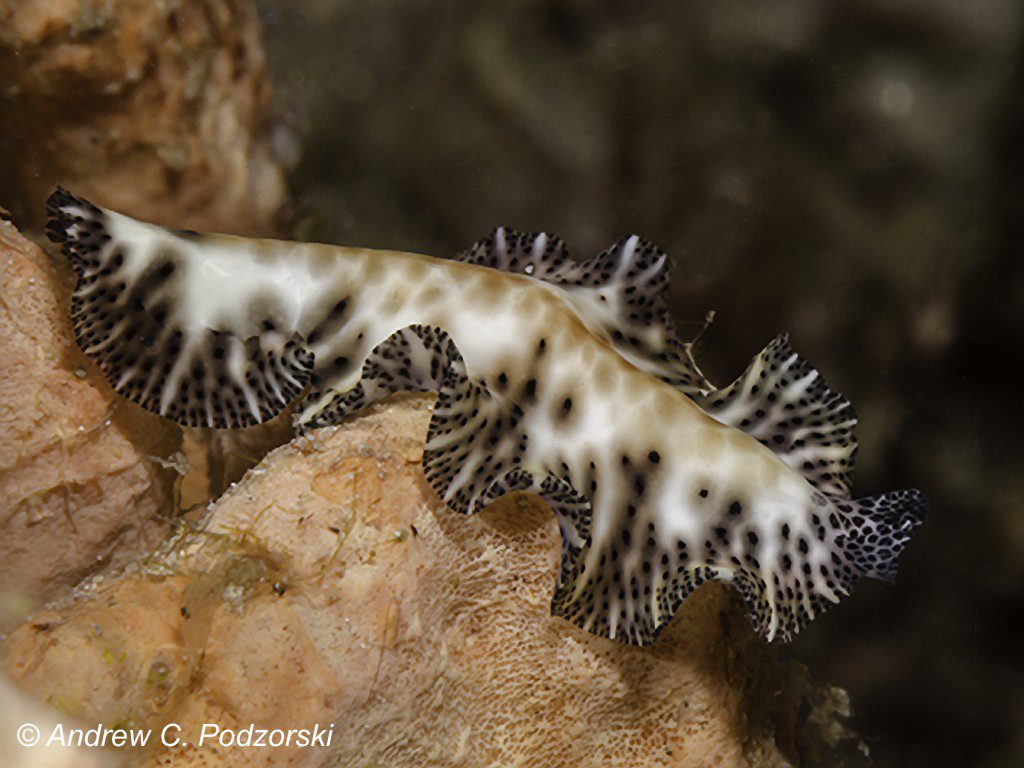A Kaleidoscope of Flatworms by Andrew Podzorski
A Kaleidoscope of Flatworms
by Andrew Podzorski
Much is written about Raja Ampat as a centre of diversity for fish and corals, but it doesn’t end there. In some 38 years of diving, I have never seen such a variety of brightly coloured flatworms as in Raja Ampat. They range in form from the small brown circular plaques of the aceol turbellarians that can completely cover soft and hard corals, through to the 4cm wide and 25 cm long Pseudobiceros gratus, the frilly margined Maiazoon orsaki, to the many nudibranch mimics.
Their bright colours serve to warn predators of the powerful nerve toxins, similar to ciguatera, present in many species. This is one reason why the flamboyant species are often seen during the day.
Although primarily predators, feeding variously on sessile ascidians, bryozoans, worms, molluscs, the acoel flatworms have symbiotic algae.
They are very difficult to collect as the slightest contact with them will tear their fragile paper thin bodies, and preservation techniques are special. This means that taxonomic research proceeds more slowly than with vertebrates or crustaceans, and the chance of finding undescribed species is high. Photographs are important in identifying species as their colour patterns and forms are important for identifying the larger species.
In Raja Ampat, they are found in all habitats, but if you dive The Passage and can drag yourself away from the sunbeams in the cavern, and from the thrill of the current, hug the bottom and look around. You may find some interesting surprises!
Born in 1953 on the east coast of Scotland, Andrew Podzorski’s passion for the nature started at four years old. Graduating in botanical taxonomy from Edinburgh, Reading and the University of the West Indies, he researched and published on maritime lichens, African orchids and tropical diatoms. Five years were spent organising scientific expeditions to Malaysia, Sabah, Java, the Philippines, Saudi Arabia, Namibia and Madagascar.
His burning interest in diving was awoken in Jamaica in 1977, and the first underwater photographs taken in 1979. Now specialising in super macro photography, he uses images to highlight species diversity and conservation issues.
To view more of Andrew’s work visit: www.reef-rainforest.de





































